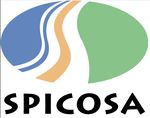Portal:SPICOSA/Intro
What is SPICOSA?
The Integrated Project SPICOSA was funded by the EU´s Sixth Framework Programme and took off in February 2007.It aims to develop and test a self-evolving, holistic research approach for the assessment of policy options for the sustainable management of Coastal Zone (CZ) systems. It is thus of highrelevance to Integrated Coastal Zone Management (ICZM) and other related European policies.
The initiative is based on the insight that policy has not been able to respond effectively enough to human pressures on the coastal environment. A more innovative, thorough approach is needed to treat the coastal zone as an integral functioning system (the CZ System) and to focus more on providing prognostic information to decision makers on how a CZ system might respond to sustainable technical options or management strategies.
The methodological product of the project is called the Systems Approach Framework (SAF). It is based on an adaptation of the Systems Approach that incorporates the ecological, social and economic dimensions of the coastal zones together with emerging concepts on system complexity. The SAF is designed to be readily updateable, to provide an accumulative knowledge base for wider and more complex applications, and to contribute to a growing understanding the options and actions necessary for the transition to sustainable development.
Who are we?
54 institutions from all across Europe are united in the SPICOSA partnership, representing national research institutes, universities, small and medium enterprises (SMEs), the Joint Research Centre(JRC) and the NGO EUCC Mediterranean Centre.
What are we doing?
Six main objectives are guiding the SPICOSA initiative:
- To create an operational Systems Approach Framework (SAF) for assessments of policy alternatives in Coastal Zone Systems
- To establish a working science-policy interface and qualify and quantify complex systems, in order that the SAF is scientifically credible and operationally functional
- To implement and test the SAF over eighteen diverse Study Site Applications throughout the European region
- To generate an SAF Portfolio consisting of generic assessment-methodologies, decision-support tools, models, and new knowledge useful for ICZM
- To improve the Communication and Integration among the main actors and infrastructures of coastal zone systems that promote Sustainable Development
- To enhance new opportunities for academic and professional training in ICZM. See SETnet platform.
What are the Sudy Sites?
We have chosen eighteen Study Site Applications (SSAs) all over Europe to test and perfect the System Approach Framework, SAF methodology at various sites such that its operational use is not limited to any specific policy issue, socio-economic condition, or coastal zone type.

